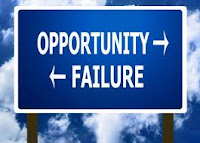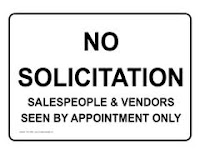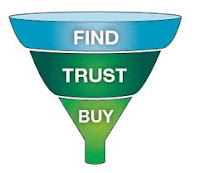The road for Brokers/Agents in 2013 and Beyond is filled with disruptive changes, dead-ends, and potential rewards along the way. As we have introduced Brokers/Agents to our 5 Strategies and Solutions for Success for assisting Employers, Employees, and Individuals in dealing with PPACA / Obamacare, the interest has been overwhelming! The responses have been interesting and thought provoking. For this discussion, I will First point out the areas of most confusion. Second - I will further explain the 5 Integrated Strategies and Solutions. Third - I will discuss the 5th Strategy - "Inbound Marketing".
First - At the forefront of the responses and apparent confusion were:
- The future of Employer based benefits?
- The timelines for implementation of the Health Care Reform, PPACA?
- The role of Private Exchanges vs Federal and State Exchanges?
- The future of the commission based compensation model for Brokers/Agents?
- The differentiation of workable Strategies and Solutions depending on the Employer's size?
- The availability of Individual Health and Voluntary Plans?
- How a Defined Contribution Plan Designs Work?
In future posts we will we will discuss each these questions to bring some clarity in the rapidly changing marketplace. We invite your input of expertise!
Second - Our 5 Integrated Strategies and Solutions for assisting Brokers/Agents in dealing with PPACA/Obamacare for Employers, Employees, and Individuals:
1) Private Exchanges provide an Online Marketplace for Employers of all sizes and industries - and their Employees - to compare and purchase Health Insurance as well as Voluntary and Ancillary Plans. While not required, most Private Exchanges will be offered on a Defined Contribution(DC) basis by the Employers with the assistance of Brokers and Service providers.
2) Defined Contribution (DC) Plans are updated Full Flex Cafeteria Plans on steroids! DC permits the CFO to budget benefits year-by-year and allocate dollar/credits to Employees for purchasing benefits, including Core, Voluntary/Worksite, and Ancillary Plans. At the same time the Broker works with the HR Department to select the menu of benefits to be offered to the Employees - as well as the methods for Employee Education, Communication, Enrollment, and Data Management. .
3) Integrated Employee Benefits encompass traditional Core Benefits, Voluntary/Worksite Plans, Ancillary Plans, and Tax Advantaged IRSC Plans, ie. Section 125 and Reimbursement Plans. Employers and Employees are provided informed choices to meet their personal and family needs.
4) Integrated Technology Solutions are essential to delivering the intended results of the 5 Strategies. These are updated and new software systems that permit the Insurance and Benefits Decision-Makers to facilitate the 5 Integrated Strategies. Our at BenefitPlace.biz is to provide the Brokers and Employers choices in technologies to meet specific needs on a case-by-case basis.
5) Inbound Marketing Strategies drive qualified, targeted prospects to the Broker without the high cost and inefficiencies of traditional Outbound Marketing. How? By leveraging the Power of the Internet, Search Engines, Social/Business Media, and SEO. The Listings on BenefitPlace.biz - an Information and Research Center for the Insurance and Benefits Industries - and BPTradeShow.com - a Virtual Trade Show for the Industries - assist Brokers in the shift to Inbound Marketing.
Third - The importance of a shift to Inbound Marketing to accomplish three challenges:
- Shortening Selling Cycles!
- Retaining and Attracting Clients!
- Building Revenues!
What is Inbound Marketing? Quite simply, Inbound Marketing leverages the Power of the Internet, Search Engines, Social/Business Media, and SEO to have qualified Clients and potential Clients knocking at the Broker's door for the Plans, Programs and Services they offer. Inbound marketing is the the opposite of expensive and often ineffective Outbound Marketing that has included: Cold Calling, Advertising, Buying Lists, Mailers, Traditional 3 Day Trade Shows, Entertaining, etc. See our comparison of Inbound vs Outbound Marketing.
Employers, Employees, and Individuals are increasingly searching the internet for Insurance and Benefits related Plans, Products, Services.They search for information first.Then they search for Brokers and Carriers to meet their needs and price-points. It is at this point that the search engines - based on SEO - would direct them to the Brokers Landing Pages for more information and the Broker's Call-To-Action (CTA). This starts the process of converting a qualified prospect into a Buyer/Client.
HubSpot, a leader in providing marketing software tells us, "Inbound marketing is marketing that's useful. It means acquiring customers by attracting and nurturing prospects with exceptional content, data and customer service, not interrupting them with spam. It means pulling prospects in with a magnet, not beating them over the head with a sledgehammer." HubSpot goes on to point out, "Inbound marketing tactics tend to be cheaper than traditional marketing tactics. Companies that focus on inbound tactics have a 62% lower cost-per-lead than companies that focus on outbound tactics." HubSpot further adds,"With 'old marketing' techniques, you are trying to reach a broad audience and hope for some small percentage (usually 1-3%) to respond. Looking at this another way, 97% of your marketing is wasted!"
Why should you use Inbound Marketing? I'll defer to Guy Kawasaki - a Silicon Valley venture capitalist and original employee of Apple - for the answer, “If you have more Money than brains, you should focus on Outbound Marketing. If you have more Brains than money, you should focus on Inbound Marketing.”
How do you start making a shift to Inbound Marketing? I want to emphasize first that we are not suggesting abandoning traditional Outbound strategies. We are suggesting a balanced shift of budgets and time to Inbound Marketing. When planning a shift to an Inbound Marketing strategy, there are some simple guidelines:
A) Clean-up your website to clearly explain what differentiates your organization from your competition.
B) Visitors to your website should arrive at Landing Pages specific to the Plan, Program, or Service for which they initiated the search. The Landing Page should have a clear Call-To-Action (CTA) that instructs the visitor in what to do next to participate - to become your client.
C) Utilize Social/Business Media including but not limited to: Linkedin Groups, Insurance Campus, ProducersWeb, NOLHA, SIMA, Twitter, and Facebook.
D) Participate with comments and discussions in Groups on Linkedin and other Social/Business Media outlets. Join Groups that are not only related to the Insurance and Benefits Industries but also in Groups focused on your potential Clients, ie. HR, CFOs, Manufacturing, Hospitals, Educators, Trucking, etc.
E) Sponsor and Manage Groups.
F) Start a Blog for the distribution of content related regarding your area of expertise.
G) Utilize outsourced affordable services like Astonish, Hubspot, BenefitPlace.biz, and BPTradeShow .com to assist in implementing your Inbound Marketiog Strategies.
H) Focus on building trust and adding value - not on making a quick sale!
I) Be patient and Consistent in your efforts.
Our sister websites, Benefitplace.biz - a research and information center focused on Insurance and Benefits - and BPTradeShow.com - a virtual tradeshow for the industries, assist Brokers and Agents in creating an Inbound marketing platform for attracting Employers, Employees and Individuals seeking advice on Plans, Programs, and Services.
In our next post we will be discussing how Brokers Service Providers can retain and build Employer Groups by offering access to a branded Private Exchange - combined with a Defined Contribution Plan Design. This strategy will strengthen the Broker's position as a Trusted Advisor and create the perfect platform for offering Health, Voluntary/Worksite, and Ancillary Plans.
For more information about the above, Email max@benefitplace.biz or Call 216.577.5579 and ask for Phil.



Comments